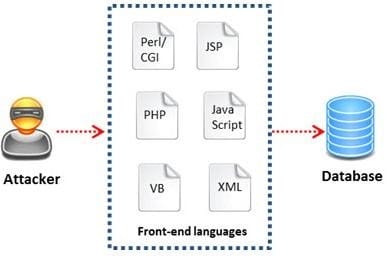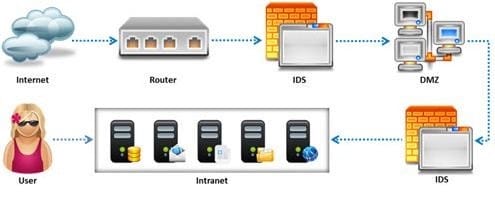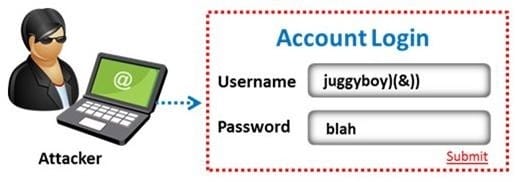The Web parameter tampering attack is based on the manipulation of parameters exchanged between client and server in order to modify application data, such as user credentials and permissions, price and quantity of products, etc. Usually, this information is stored in cookies, hidden form fields, or URL Query Strings, and is used to increase application functionality and control.
This attack takes advantage of the fact that many programmers rely on hidden or fixed fields (such as a hidden tag in a form or a parameter in a URL) as the only security measure for certain operations. Attackers can easily modify these parameters to bypass the security mechanisms that rely on them.

What is the best way to protect web applications from parameter tampering attacks?
A. Validating some parameters of the web application
B. Minimizing the allowable length of parameters
C. Using an easily guessable hashing algorithm
D. Applying effective input field filtering parameters
A WHERE clause in SQL specifies that a SQL Data Manipulation Language (DML) statement should only affect rows that meet specified criteria. The criteria are expressed in the form of predicates. WHERE clauses are not mandatory clauses of SQL DML statements, but can be used to limit the number of rows affected by a SQL DML statement or returned by a query.

A pen tester is trying to gain access to a database by inserting exploited query statements with a WHERE clause. The pen tester wants to retrieve all the entries from the database using the WHERE clause from a particular table (e.g. StudentTable).
What query does he need to write to retrieve the information?
A. EXTRACT* FROM StudentTable WHERE roll_number = 1 order by 1000
B. DUMP * FROM StudentTable WHERE roll_number = 1 AND 1=1-
C. SELECT * FROM StudentTable WHERE roll_number = '' or '1' = '1`
D. RETRIVE * FROM StudentTable WHERE roll_number = 1'#
Which vulnerability assessment phase describes the scope of the assessment, identifies and ranks the critical assets, and creates proper information protection procedures such as effective planning, scheduling, coordination, and logistics?
A. Threat-Assessment Phase
B. Pre-Assessment Phase
C. Assessment Phase
D. Post-Assessment Phase
Which of the following statements is true about Multi-Layer Intrusion Detection Systems (mIDSs)?
A. Decreases consumed employee time and increases system uptime
B. Increases detection and reaction time
C. Increases response time
D. Both a and c
Due to illegal inputs, various types of TCP stacks respond in a different manner. Some IDSs do not take into account the TCP protocol's urgency feature, which could allow testers to evade the IDS.

Penetration tester needs to try different combinations of TCP flags (e.g. none, SYN/FIN, SYN/RST, SYN/ FIN/ACK, SYN/RST/ACK, and All Flags) to test the IDS.
Which of the following TCP flag combinations combines the problem of initiation, midstream, and termination flags with the PSH and URG?
A. SYN/RST/ACK
B. SYN/FIN/ACK
C. SYN/FIN
D. All Flags
The amount of data stored in organizational databases has increased rapidly in recent years due to the rapid advancement of information technologies. A high percentage of these data is sensitive, private and critical to the organizations, their clients and partners. Therefore, databases are usually installed behind internal firewalls, protected with intrusion detection mechanisms and accessed only by applications. To access a database, users have to connect to one of these applications and submit queries through them to the database. The threat to databases arises when these applications do not behave properly and construct these queries without sanitizing user inputs first.
Identify the injection attack represented in the diagram below:

A. Frame Injection Attack
B. LDAP Injection Attack
C. XPath Injection Attack
D. SOAP Injection Attack
The term social engineering is used to describe the various tricks used to fool people (employees, business partners, or customers) into voluntarily giving away information that would not normally be known to the general public.

What is the criminal practice of social engineering where an attacker uses the telephone system in an attempt to scam the user into surrendering private information?
A. Phishing
B. Spoofing
C. Tapping
D. Vishing
Which of the following methods is used to perform server discovery?
A. Banner Grabbing
B. Whois Lookup
C. SQL Injection
D. Session Hijacking
Which of the following attacks does a hacker perform in order to obtain UDDI information such as businessEntity, businesService, bindingTemplate, and tModel?
A. Web Services Footprinting Attack
B. Service Level Configuration Attacks
C. URL Tampering Attacks
D. Inside Attacks
What are the scanning techniques that are used to bypass firewall rules and logging mechanisms and disguise themselves as usual network traffic?
A. Connect Scanning Techniques
B. SYN Scanning Techniques
C. Stealth Scanning Techniques
D. Port Scanning Techniques